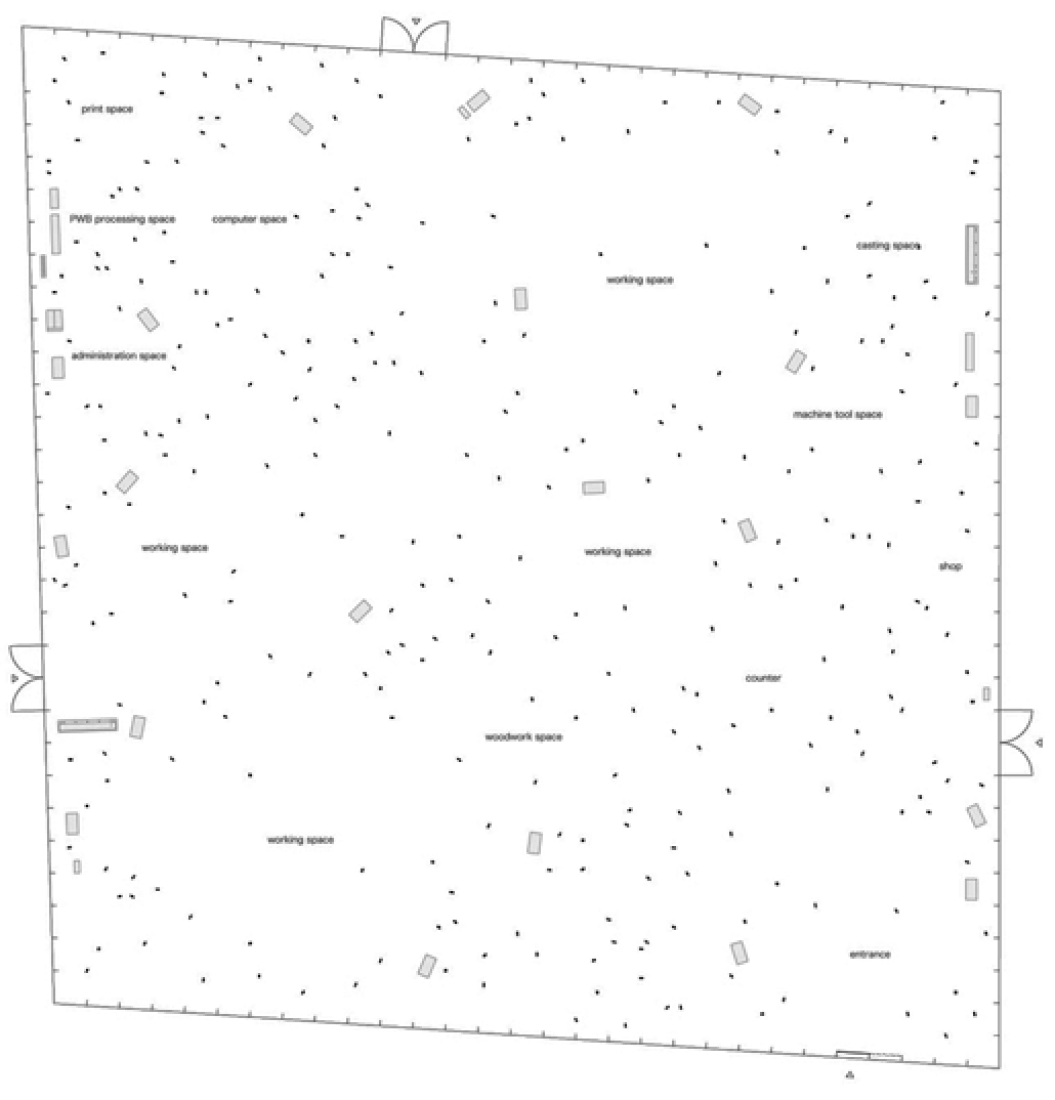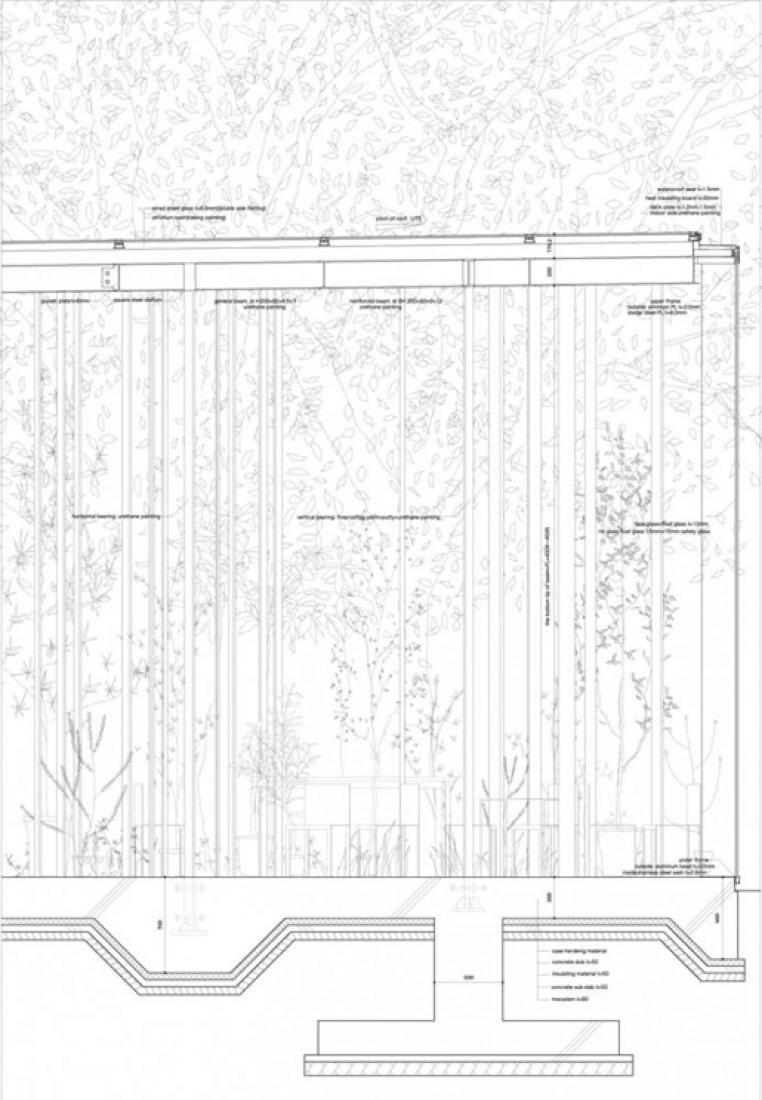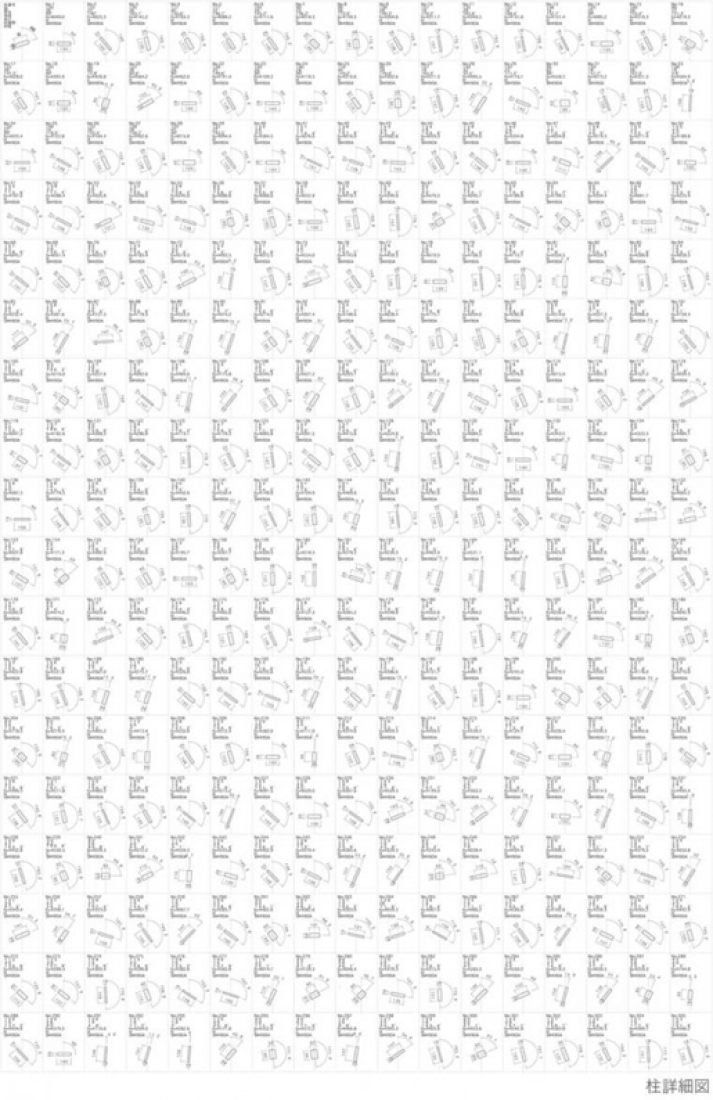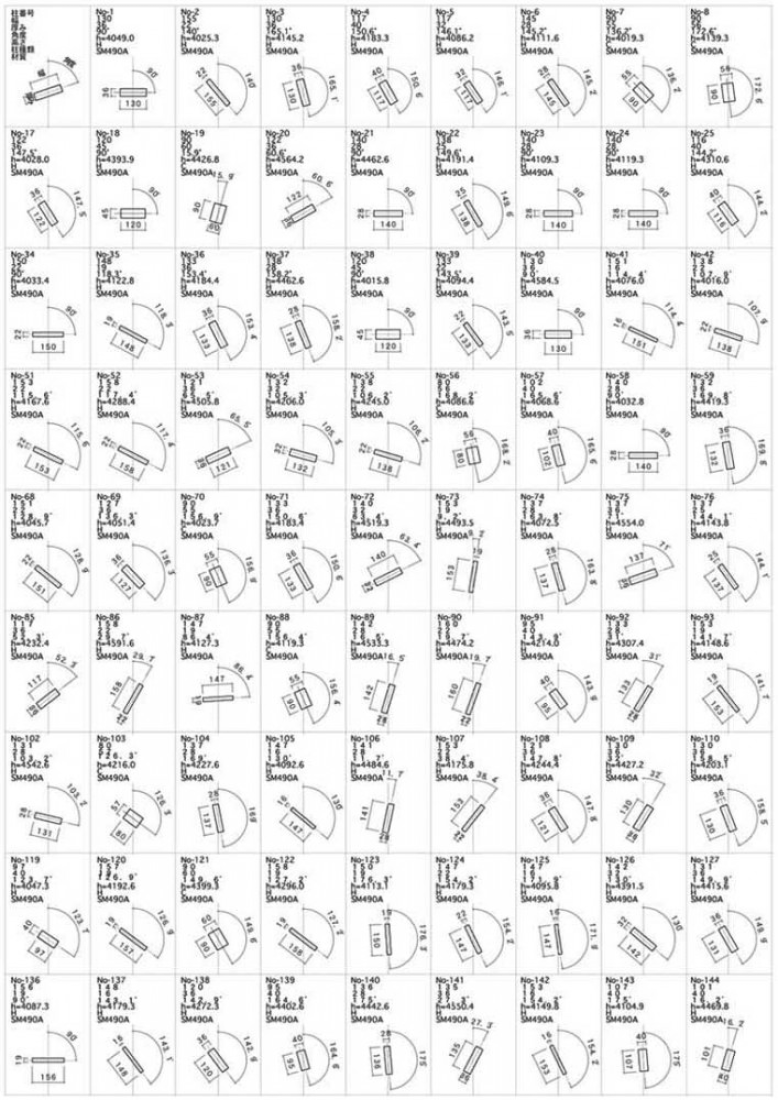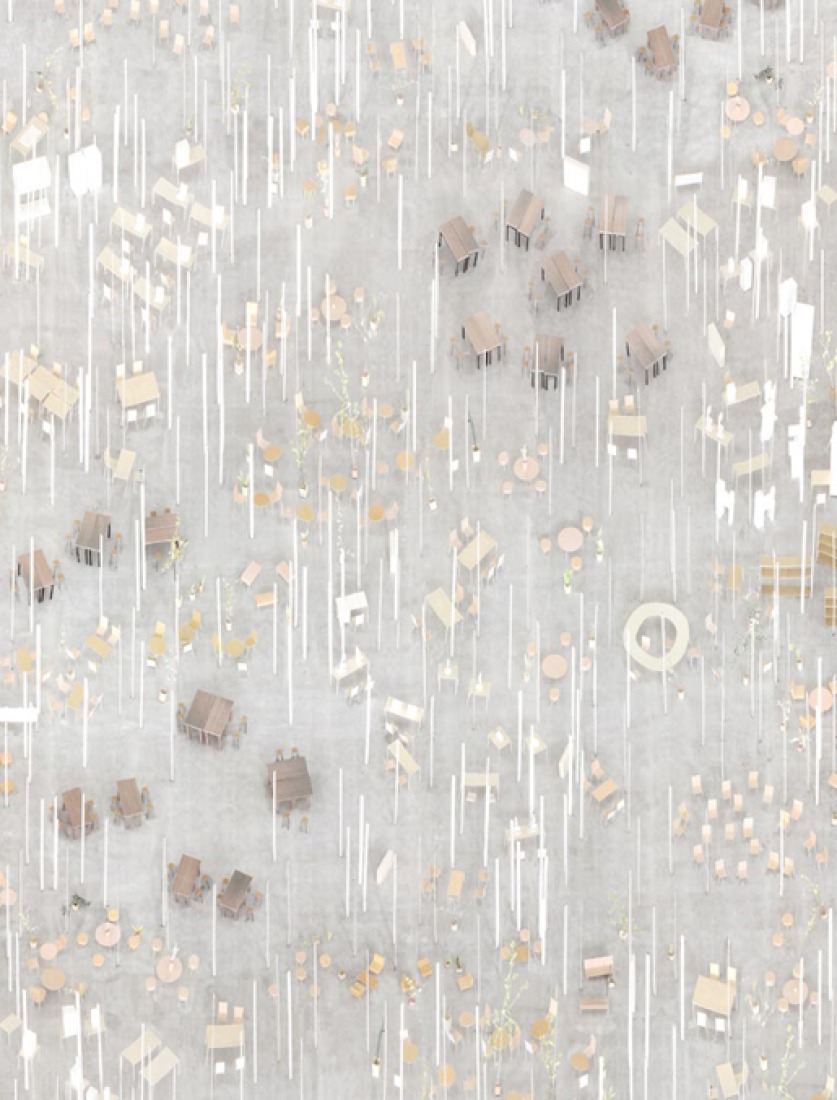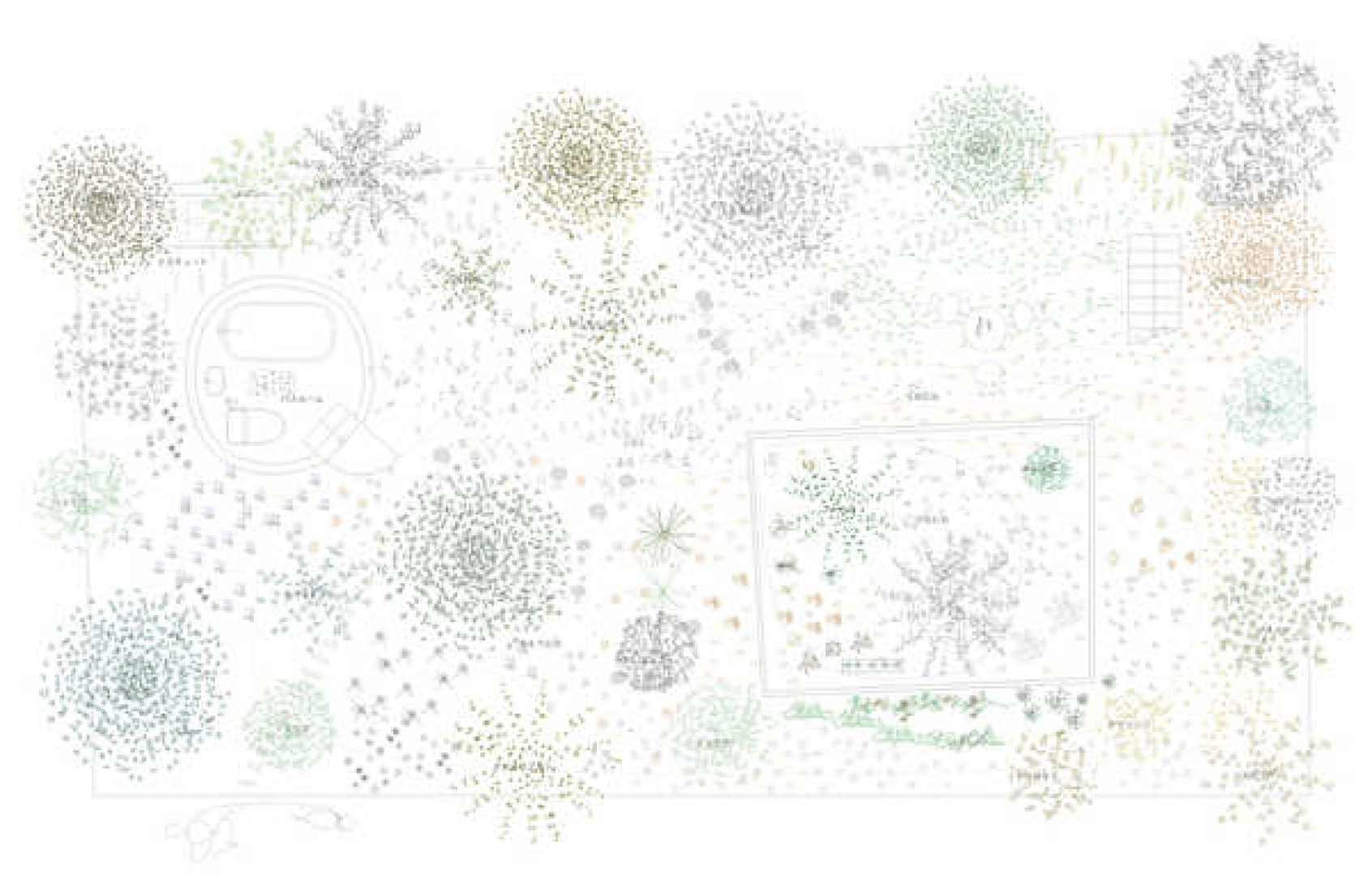The structure presents another round in the architect’s ongoing contest with gravity. The forest comprises 305 slender steel 5m-high columns, irregularly orientated and distributed throughout the space, while the field from which they rise is a distorted square bed of concrete, 47m by 46m, slightly raised above the surrounding bitumen. A flat roof caps the space with linear roof lights, and a frameless glass perimeter seals it. The architecture ends there; its animation then takes over with furniture, pot plants and people.
Ishigami explains the evolution of the design as a painstaking investigation of the relationships between the columns – a task for which he developed custom-made software.
"I wanted to make a space with very ambiguous borderlines, which has a fluctuation between local spaces and the overall space, rather than a universal space like that of Mies" says Ishigami. "This allows a new flexibility to emerge, revealing reality rather than shaping it."


















